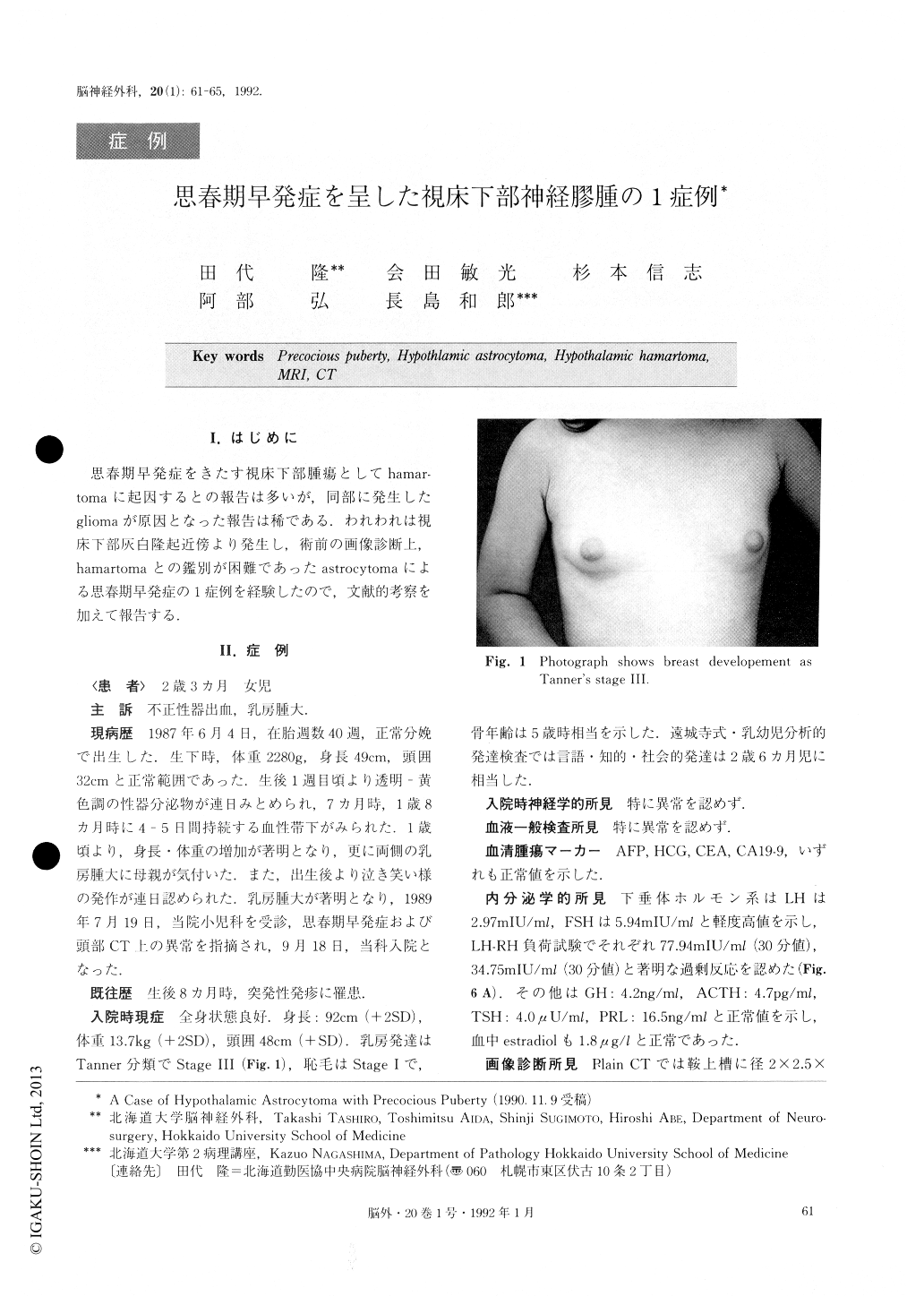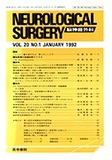Japanese
English
- 有料閲覧
- Abstract 文献概要
- 1ページ目 Look Inside
I.はじめに
思春期早発症をきたす視床下部腫瘍としてhamar—tomaに起因するとの報告は多いが,同部に発生したgliomaが原因となった報告は稀である.われわれは視床下部灰白隆起近傍より発生し,術前の画像診断上,hamartomaとの鑑別が困難であったastrocytomaによる思春期早発症の1症例を経験したので,文献的考察を加えて報告する.
A case of hypothalamic astrocytoma with precocious puberty is presented.
In July 1989, a 2-year-old girl was admitted to our hospital because of vaginal bleeding and enlargementof breasts. Breast development was Tanner's stage 3 and no pubic hair was present. Endocrinological evalua-tion revealed a slightly high level of LH, but the res-ponses of LH and FSH to LH-RH test resulted in ex-ceedingly high values similar to those in adults.
Plain CT scan showed an isodense mass in the su-prasellar cistern which was not enhanced following administration of contrast medium. MR imaging re-vealed the precise location of the mass attached to the posterior hypothalamus between the pituitary stalk and the mamillary bodies in sagittal view. The signal in-tensity of the mass was homogenous and isointense re-lative to the gray matter on T1 weighted image. But on T2 weighted image, it showed high signal intensity compared with the normal brain parenchyma.
A right fronto-temporal craniotomy was performed and the tumor was partially removed. Histological ex-amination disclosed moderate hypercellularity of glial cells but no neurons were visible. This appeared to be astrocytoma grade II.
In the literature, CT and MRI behaviour of hypothal-mic hamartomas are almost similar to our case. There-fore we think it is not possible at the present time to differentiate a low grade astrocytoma from hamartoma when using CT and MRI alone. In this case, the mechanism of development of precocious puberty seemed to be due to hypothalamic compression by the tumor.

Copyright © 1992, Igaku-Shoin Ltd. All rights reserved.


